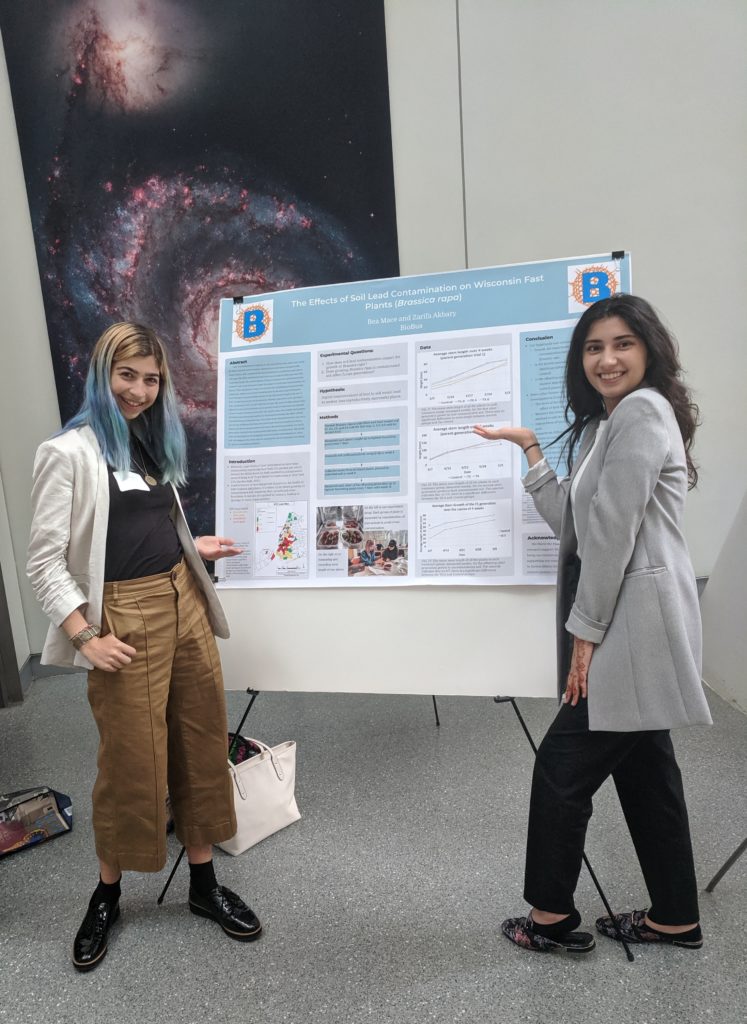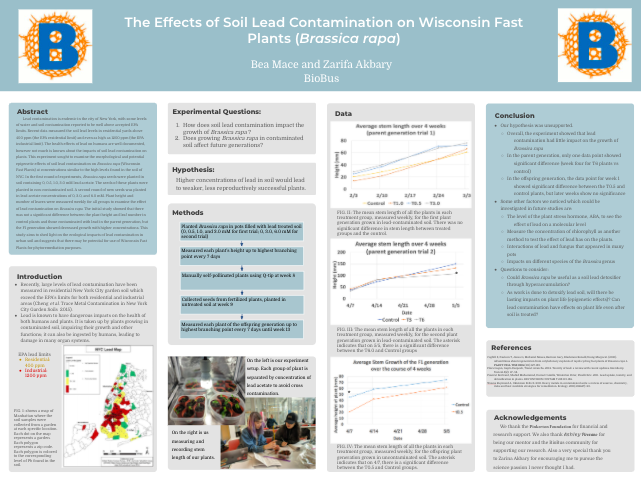
Students: Bea Mace and Zarifa Akbary
Mentor: Ashley Pirovano
All 2018-2019 Projects
Brief Description: How does lead contamination in the soil affect plant growth?

Abstract:
Lead contamination is endemic in the city of New York, with some levels of water and soil contamination reported to be well above accepted EPA limits. Recent data measured the soil lead levels in residential yards above 400 ppm (the EPA residential limit) and even as high as 1200 ppm (the EPA industrial limit). The health effects of lead on humans are well documented, however not much is known about the impacts of soil lead contamination on plants. This experiment sought to examine the morphological and potential epigenetic effects of soil lead contamination on Brassica rapa (Wisconsin Fast Plants) at concentrations similar to the high levels found in the soil of NYC. In the first round of experiments, Brassica rapa seeds were planted in soil containing 0, 0.5, 1.0, 3.0 mM lead acetate. The seeds of these plants were planted in non-contaminated soil. A second round of new seeds was planted in lead acetate concentrations of 0, 3.0, and 6.0 mM. Plant height and number of leaves were measured weekly for all groups to examine the effect of lead contamination on Brassica rapa. The initial study showed that there was not a significant difference between the plant height and leaf number in control plants and those contaminated with lead in the parent generation, but the F1 generation showed decreased growth with higher concentrations. This study aims to shed light on the ecological impacts of lead contamination in urban soil and suggests that there may be potential for use of Wisconsin Fast Plants for phytoremediation purposes.